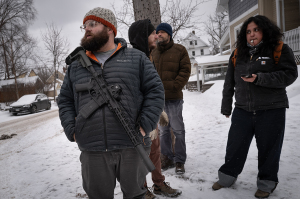In Sickness and in Health: Romance and Disability
Raising a family and keeping love alive in a marriage with a spouse who is constantly sick or in severe pain is an extreme challenge; one with many casualties. The divorce rate in couples with a disability in the family hovers around 90% and relationships with a disability or chronic medical condition face significant pressures on the love holding the marriage together. In my many years of caregiving I've observed and am learning four particular concepts that help allow love to transcend the harsh realities of living with someone who is sick and hurting -realities that can easily destroy a love.
1. Separate the person from the pain
How do you keep love and passion thriving in a chronic medical catastrophe where the suffering is not limited to a short-term illness or injury?
Different from Alzheimer's or dementia, marriages impacted by one spouse living with a broken or diseased body while retaining complete cognitive awareness encounter a different set of emotional trials for the marriage. The challenge for the healthy spouse is to maneuver through the minefield of medical issues, attending to each of them, but never losing sight of the suffering person's heart. Taking care of the body does not always equate to caring for the heart.
The challenge for the sick or injured spouse, even from a wheelchair or while in severe chronic pain, is to recognize that matters of the heart, though often less demanding , are just as important (if not more so) as the needs of the body.
2. Live while hurting
It is appropriate to acknowledge our hurts, but, after nearly three decades of living with someone who daily suffers from severe chronic pain, I have witnessed the difference between "living with pain" versus "living while in pain." My wife didn't have to go to Africa and launch a prosthetic limb ministry. She could have easily chosen to focus on herself and her own challenges. She purposed, however, to give out of her lack-and in doing so, she continues to touch a great many lives even though she can no longer travel. She saw something worthwhile that didn't reduce her pain, but rather transcended it. The lesson I learned from this is that is possible and rewarding to live a full and rich life while in pain.
We don't have to wait until we "feel good" before we participate and are successful in life. I remember a special night in Madison Square Garden right after President George W. Bush gave his acceptance speech for the nomination in 2004. Invited to be on the platform behind the President following Gracie's performance at the convention two nights prior, we had to be in place on the stage early in the evening. For several hours we sat there, while my wife's pain levels escalated. She knew she would be uncomfortable, and she knew it would be a long night, but we lived in the moment together, and after the President left, we danced together among the fallen balloons and confetti while country singer Lee Ann Womack stood just feet away singing her hit song, "I Hope You Dance."
Gracie did opt to forgo wearing dress shoes in order to be a bit more comfortable. You can still see us in pictures sitting just behind the President's left shoulder. Gracie's robotic-looking legs are in plain view with her bright white sneakers-which I think is hilarious! If Gracie and the President of the United States didn't mind, no one else should!
3. Love while hurting
Everyone hurts at some point; even supermodels and professional athletes suffer physically at times. Using sickness or feeling bad as an excuse to disconnect from the needs of close relationships sets a horrible and destructive precedent that seems to say, "I can be focused only on me whenever I feel bad."
While hanging on the cross, Christ expressed his concern for his mother, and even the people mocking him. He's the perfect model of loving while hurting. That love is freely offered to us, and can be dispensed into all of our relationships-specifically into the most intimate relationship of all: our marriages. It's not easy, and sometimes it can feel a bit one-sided-yet, it is possible.
Experience teaches me that life-changing and transcending love abounds when we choose to turn our eyes to others-particularly (and peculiarly) while carrying great burdens ourselves.
We cannot escape the relentless difficulties in this life; we do however, have the opportunity to embrace each other, even while in pain, and discover love-and romance, are not dependent on external circumstances, but instead reside solely in the heart. As the wonderful Rodgers and Hart song stated so well:
My romance doesn't have to have a moon in the sky
My romance doesn't need a blue lagoon standing by;
No month of May, no twinkling stars,
No hide away, no soft guitars.
My romance doesn't need a castle rising in Spain,
Nor a dance to a constantly surprising refrain.
Wide awake,
I can make my most fantastic dreams come true.
My romance doesn't need a thing but you.
4. See the heart, not "the chart"
For caregivers I offer this advice: if the love of your life struggles with chronic disease or injury, take a moment to see beyond the medical chart, the broken body and the pain-filled eyes…and connect to the heart of the extraordinary person who captured your heart. Due to medical circumstances, it may be one-sided, but that's okay.
As a caregiving spouse, I am the only person on this planet not connected by blood or money who has volunteered to care for my wife in this manner. That distinction is important and speaks to the core motivation I have for my wife: I chose her. The reasons I chose her are important and are worthy of celebrating. Even if I have to sometimes buy my own Valentine's Day card-that is still a beautiful way to honor the relationship.
And for those suffering who are able to do so-look deeply into the eyes of the weary soul who looks after you, quietly hold hands and bask in the love you both share; a love that is defying the odds.
Happy Valentine's Day.



























